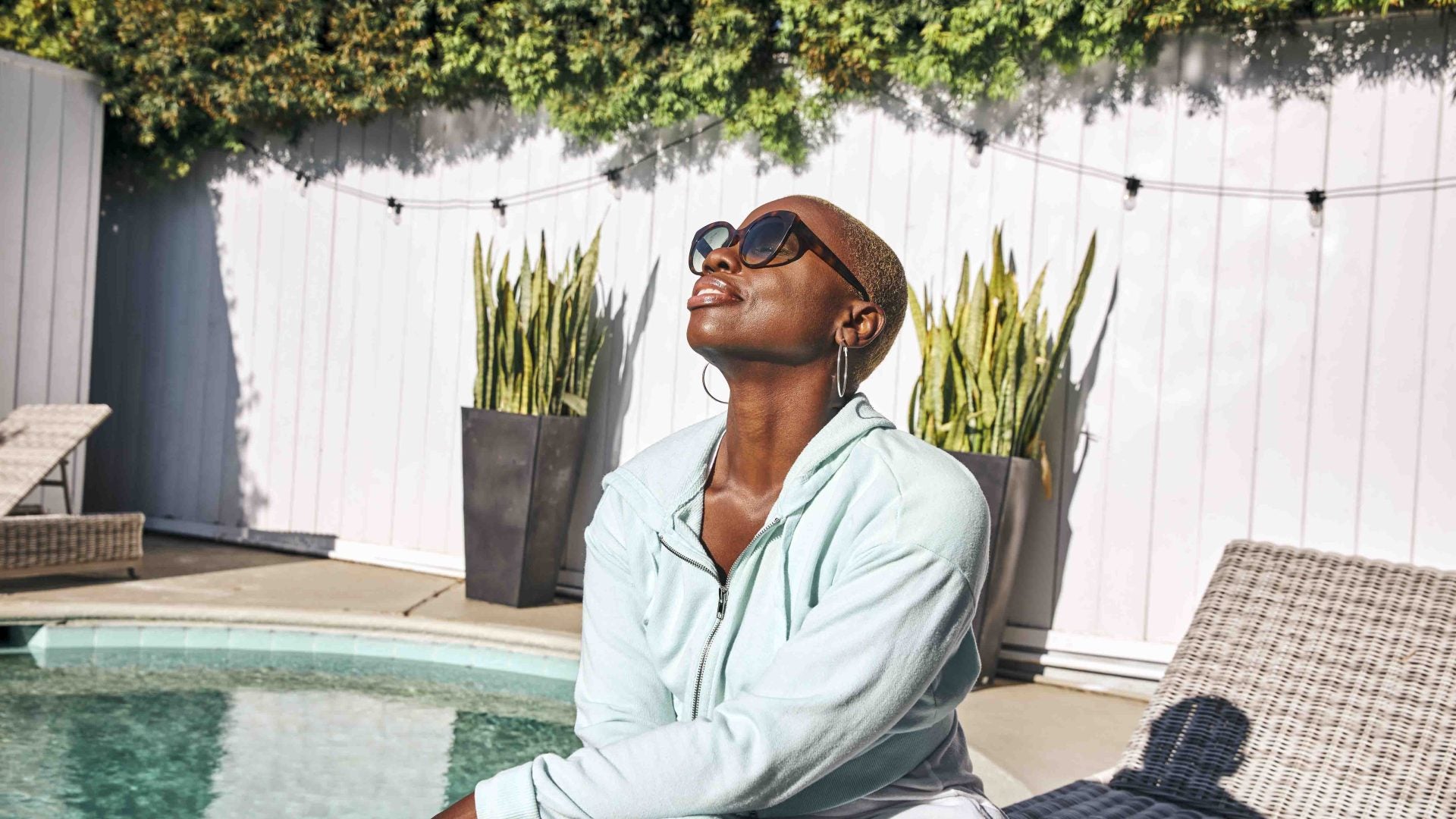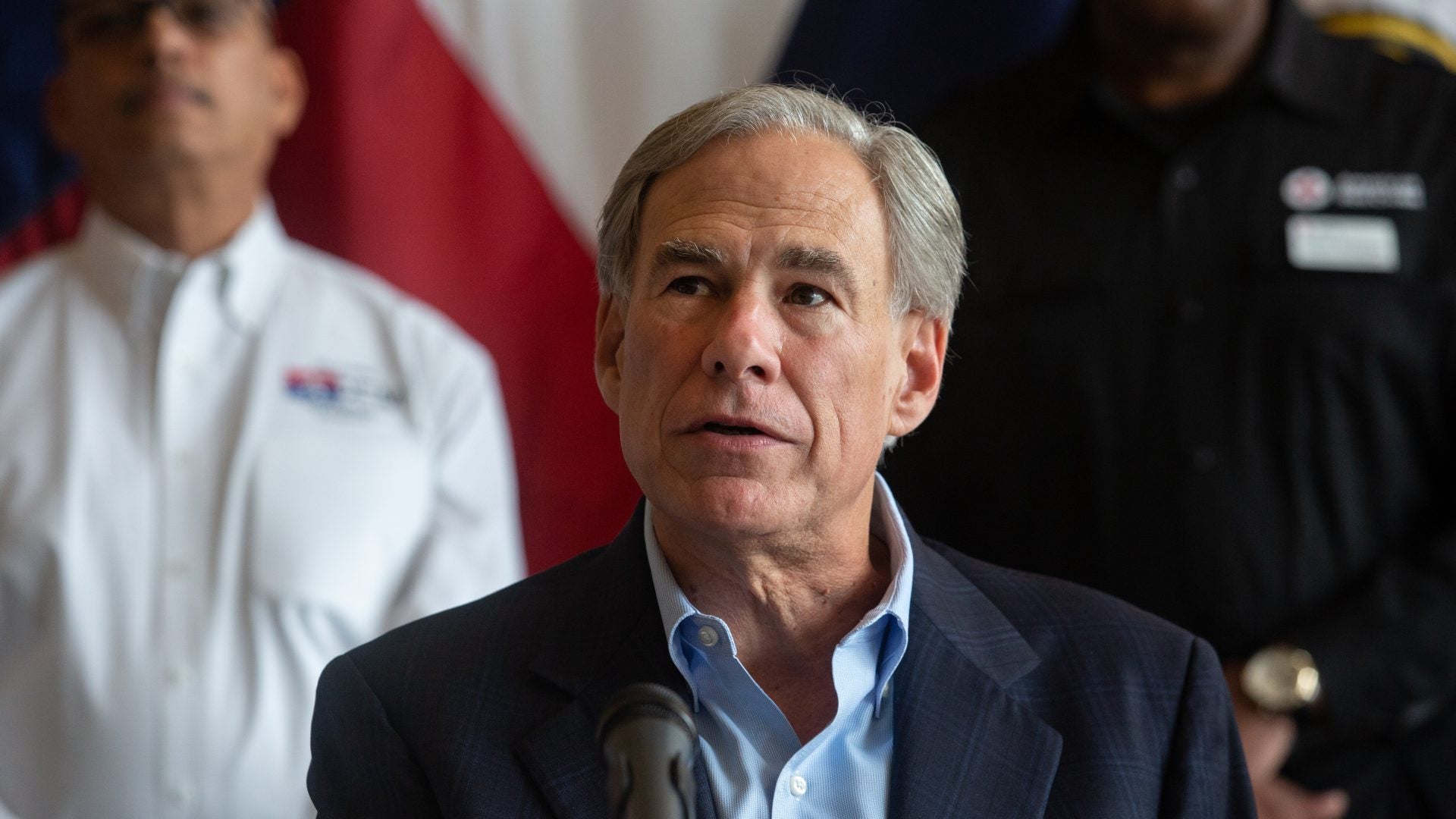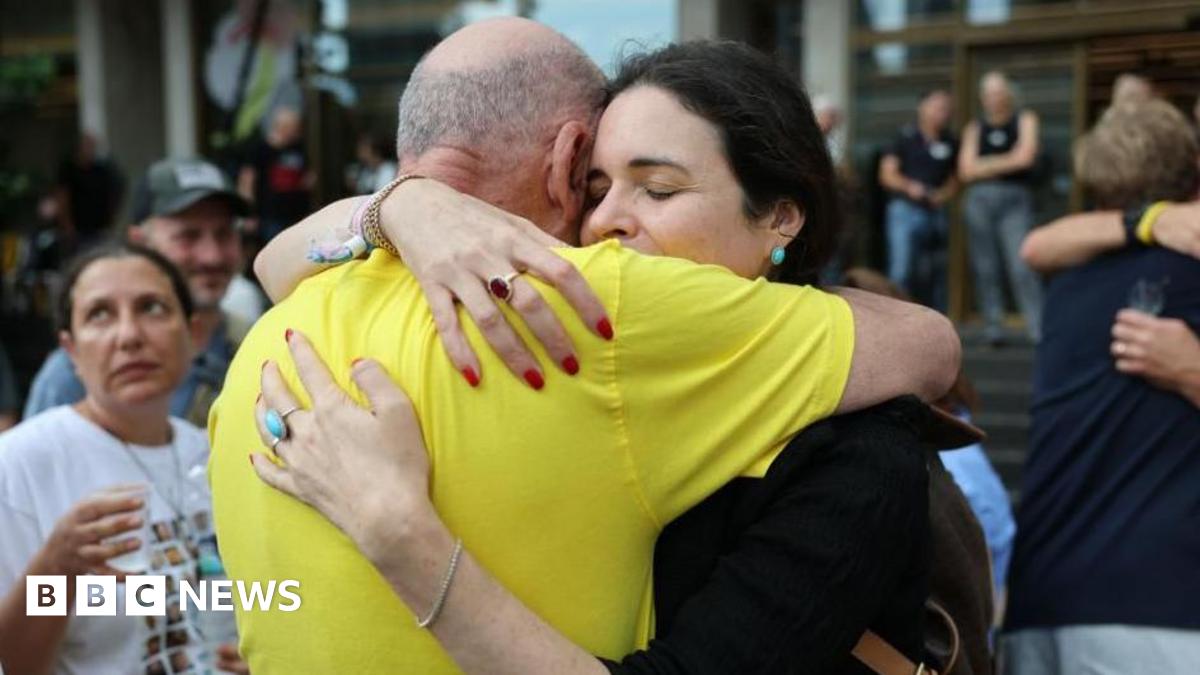America’s Next Top AI: Can The Black Beauty Community Stay on Top?
AI is making its way to a runway near you. No longer just drafting emails, but curating AI-generated stitch braids and posting “picture-perfect” beauty inspo. From hair brands to fashion magazines, […] The post America’s Next Top AI: Can The Black Beauty Community Stay on Top? appeared first on Essence.

AI is making its way to a runway near you. No longer just drafting emails, but curating AI-generated stitch braids and posting “picture-perfect” beauty inspo. From hair brands to fashion magazines, AI is in the final cycle. Some see it as a cost-effective tool for innovation, while others warn it could dismantle the industry and cost jobs.
To get the real story, I spoke with those in the fashion and beauty community who have front row seats to the industry ins and outs. They all made one thing clear: AI is very much still in the running.
While AI is innovative, it also sidelines Black artists by profiting from our likeliness while excluding us from the creative process. With intentional inclusion, thoughtful regulation, and programs that teach the next generation to shape AI, we can ensure the AI boom lifts up Black creatives.
Inspiration or Intimidation?Beauty brands are turning to AI to streamline operations, personalize products, and elevate customer experiences. Maya Smith, CEO of ILoveTheDoux, has integrated AI into her social marketing with great success.
“AI is a layer that helps us work smarter, but the foundation of our brand is 30 years of real experience with textured hair” says Smith. “We use AI to refine storytelling and bring ideas to life.”
In other words, AI is the new norm and is shaping the beauty standards for the next generation who lives online.
“My stylist has to say, ‘This is AI. I cannot do this >Grace Bukunmi. “It doesn’t even make sense—the braids don’t connect, and the patterns are impossible to achieve in real life. We’re going to have to be very careful with checking AI.”
The rise of AI in beauty has created tension for real-world creatives, who must now navigate an AI boom of unrealistic beauty standards.
Tool or Replacement?Beyond marketing and creative boards, hair stylists are finding real value in AI as a BTS assistant handling the mundane tasks. “As hairstylists, we spend so much time behind the chair,” says cosmetologist LaRae Burress. “When it comes to the admin work, that’s not my natural space; having AI streamline that process has been a relief.”
In this cycle, creative directors, storyboard artists and models stand on the line, and some are sent home while AI gets to move on to the next round. Entire teams disappear, and with every elimination, the process of creating art in the fashion and beauty spaces are changing.
“Some of my clients have replaced their casting budgets with AI models,” says Ariona Beninato, CEO of Collective Casting, a NYC based modeling agency. “There are even AI casting agencies with perfectly coded rosters.”
There’s a clear difference between using AI for concepts and admin work versus replacing an entire role. This great replacement wave is especially daunting for models who are already seeing fewer opportunities in print.
AI can create images and mimic poses, but it cannot convey the subtle emotions, personality, or presence a human brings to a set.
“A real model gives you energy in a photo—the eyes, the smile, the feeling,” model Tirzah Evora emphasized. “That’s something AI will never capture.”
Beauty influencers are also seeing AI creep into their lane too. Poreless AI avatars now have beauty tutorials and generate product reviews. Beauty creators are more than pretty faces and are real consumers testing products in real time.
@ai.kalai Replying to @Skyy Makhasi got you you bestie summer blush girl makeup
summer blush girl makeup  #makeuptutorial #softglam #latinasoftgirl #aiinfluencer #hyperrea
#makeuptutorial #softglam #latinasoftgirl #aiinfluencer #hyperrea  MAKEUP PRODUCT BREAKDOWN (in tutorial order): SKIN PREP: – @Glow Recipe Watermelon Glow Niacinamide Dew Drops — for hydrated, glowy skin – @Tatcha US The Silk Canvas — smoothing primer for blurred base FOUNDATION: – @Armani beauty Luminous Silk Foundation (shade 7.5) — lightweight with radiant finish CONCEALER: -@Rare Beauty Liquid Touch Brightening Concealer (shade 290N) — brightens under eyes and highlights center of face CONTOUR/BRONZER: -@makeupbymario SoftSculpt Shaping Stick (shade Medium Dark) — subtle contour to sculpt cheeks and forehead BLUSH: -@Diorbeauty Rosy Glow Blush (shade 001 Pink) — applied generously across cheeks, nose, and up into temples for that viral flushed effect -@Glossier Cloud Paint (shade Beam) — layered under powder blush for extra warmth HIGHLIGHT: -@Charlotte Tilbury Light Wand (shade Spotlight) — dewy champagne glow on cheekbones, tip of nose, and brow bone BROWS: -@Benefit Cosmetics Precisely, My Brow Pencil (shade 4.5) — feathered, soft brows -@REFY Brow Sculpt — laminated finish with clean hold EYES: -@Pat McGrath Labs Mothership Palette (neutral tones) — light shimmer on lids, warm matte in the crease -@Stila Cosmetics Stay All Day Waterproof Liquid Eyeliner (Black) — crisp winged liner -@ArdellBeauty Wispies (113) — fluffy natural lashes LIPS: -@maccosmetics Lip Pencil (Whirl) — lined for soft definition -@Fenty Beauty Gloss Bomb (shade Fenty Glow) — juicy peach-pink high-shine gloss SETTING SPRAY: -@charlotte tilbury Airbrush Flawless Setting Spray — locks in that summer glow#makeup #viral #ai #fyp #trending #vlog #googleveo3 ♬ Kitty Kat (Album Version) – Beyoncé
MAKEUP PRODUCT BREAKDOWN (in tutorial order): SKIN PREP: – @Glow Recipe Watermelon Glow Niacinamide Dew Drops — for hydrated, glowy skin – @Tatcha US The Silk Canvas — smoothing primer for blurred base FOUNDATION: – @Armani beauty Luminous Silk Foundation (shade 7.5) — lightweight with radiant finish CONCEALER: -@Rare Beauty Liquid Touch Brightening Concealer (shade 290N) — brightens under eyes and highlights center of face CONTOUR/BRONZER: -@makeupbymario SoftSculpt Shaping Stick (shade Medium Dark) — subtle contour to sculpt cheeks and forehead BLUSH: -@Diorbeauty Rosy Glow Blush (shade 001 Pink) — applied generously across cheeks, nose, and up into temples for that viral flushed effect -@Glossier Cloud Paint (shade Beam) — layered under powder blush for extra warmth HIGHLIGHT: -@Charlotte Tilbury Light Wand (shade Spotlight) — dewy champagne glow on cheekbones, tip of nose, and brow bone BROWS: -@Benefit Cosmetics Precisely, My Brow Pencil (shade 4.5) — feathered, soft brows -@REFY Brow Sculpt — laminated finish with clean hold EYES: -@Pat McGrath Labs Mothership Palette (neutral tones) — light shimmer on lids, warm matte in the crease -@Stila Cosmetics Stay All Day Waterproof Liquid Eyeliner (Black) — crisp winged liner -@ArdellBeauty Wispies (113) — fluffy natural lashes LIPS: -@maccosmetics Lip Pencil (Whirl) — lined for soft definition -@Fenty Beauty Gloss Bomb (shade Fenty Glow) — juicy peach-pink high-shine gloss SETTING SPRAY: -@charlotte tilbury Airbrush Flawless Setting Spray — locks in that summer glow#makeup #viral #ai #fyp #trending #vlog #googleveo3 ♬ Kitty Kat (Album Version) – Beyoncé AI avatars do not have pores or skin, so how can we trust a review from something that does not even exist?
Beauty influencer Demi Mykal believes AI has its limits. Consumers cannot make informed purchasing decisions by looking at an avatar applying digital products.
“AI avatars make a product look perfect every time,” says Mykal. “In reality, different skin tones, hair textures, and skin types react differently. Real people need to test products so consumers know what to expect.”
Representation MattersAs AI replaces parts of the beauty ecosystem, representation is a critical concern amongst the community. AI draws heavily from Black likeliness, yet Black creators are rarely part of the process—only the product.
“Every Black woman image the system returned was overexaggerated,” Candiace Scarborough, director of cybersecurity and software engineering at Parsons, told Essence Girls United contributor Makala Wright. “None of them looked like a tech executive or podcast host. We’re either invisible in AI or turned into a stereotype. There’s no in-between, and that’s precisely the problem.”
@reallityofai I need a rinse too #ai #veo3 #altimadrivers #nissan ♬ original sound – Reality Of AiBrands are taking specific features from different races and curating them into AI avatars that are aligned with the brands aesthetic. These avatars often look ambiguous, mixing multiple nationalities to create a “new” look, yet these looks already exist in real people.
“AI avatars are taking money away from real models,” says Bukunmi. “And the irony is, as the human population becomes more diverse, we’re seeing more people who naturally embody that blended look. Yet instead of hiring them, brands use avatars—often created by men—to represent women.”
At many of the largest beauty and fashion houses, often led by White men, the images of Black women are still being shaped from the top down. Black models make up about 6 percent of runway castings. If AI continues to profit off of “Black” talent, equity must come first.
“Until we give equity to Black talent, no brand should be using AI to create Black talent in any capacity,” says Beninato.
Not every brand is using AI to replace Black talent. ILovetheDoux uses their platforms to raise awareness about AI and to create tools that support the next generation of Black creatives.
Programs like Maya Smith’s Black Beauty AI Challenge, in partnership with Black Girls Code, are teaching over 600 Black girls to use AI as a creative tool and putting Black voices at the center of the AI beauty revolution.
“Not only those with advanced education [should] learn how to use AI to build businesses or grow the ones they already have,” says Smith. “Single mothers, high school students and even the formerly incarcerated can [have an impact] on AI.”
If you asked ChatGPT whether any Black Americans helped build it, the answer would be no. There remains a significant gap in Black leadership within AI. That absence increases the risk of caricature and stereotyping in AI image outputs of the Black community.
What about our water?AI’s impact goes beyond representation. Every time AI runs, data centers use massive amounts of water to stay cool, we pay the price.
Most U.S. AI data centers are located in predominantly Black and low-income neighborhoods. Essence Girls United contributor Nia Birkley reported that Elon Musk’s xAI is building one of the world’s largest AI supercenters in one of Memphis’ poorest areas, reflecting a long history of environmental racism in the US.
Recently, the NAACP launched the campaign “Tell Congress to Stop AI,” urging accountability and educating communities about Musk’s plan to expand xAI’s power supply through a partnership with a Mississippi power plant. Residents often have no say in these projects, leaving them vulnerable.
At the end of the day, AI supercenters are going to be built because there is demand. Though they do actively utilize AI, ILovetheDoux recognizes that it is not great for the environment.
“I recognize the environmental concerns surrounding AI, but the reality is that it is here and it is not slowing down,” says Smith. “If we are not in the room, we cannot shape it from the inside [and] eventually we will be shut out of the conversation entirely.”
It’s not fair that the AI centers often end up in Black and or low-income neighborhoods, where people don’t even get the chance to say no. These centers can be tied to cancer and are actively taking millions of gallons of drinking water from locals per day. Worse yet, they’re being constructed in communities with the fewest resources and power to fight back.
Real Beauty in Real thingsBeauty can’t be replicated. The glam space thrives on emotion, energy, and human connection.
“The glam space is vulnerable and soft,” says Burress. “You need people who understand emotions and have em>Black Beauty AI Challenge show there is a >enormous amounts of water and are often located in under-resourced Black communities. Addressing these challenges means thinking about long term environmental impact, ensuring innovation does not come at the cost of Black communities or the planet.
What started as a BTS assistant is now in the final cycle. AI is the new face of inspo-boards, editorial campaigns, and is shaping the beauty standards of gen Z. While also profiting from Black likeliness and pushing Black artists further out of the frame and destroying their communities.
Beauty and fashion must reflect real people, culture, and creativity and that will only happen if we address AI now. The choices we make today will determine whether AI becomes just another tool or a force that erases the humans behind the artistry.AI may be in the running. But, if this were America’s Next Top Model, the final photo still belongs to us.
TOPICS: AI beauty Black ModelsThe post America’s Next Top AI: Can The Black Beauty Community Stay on Top? appeared first on Essence.
























